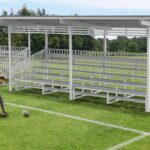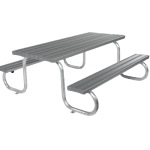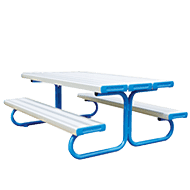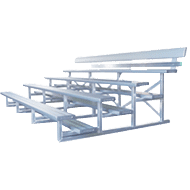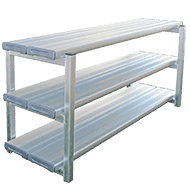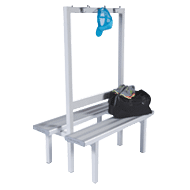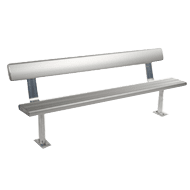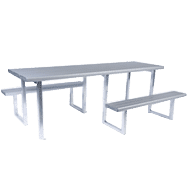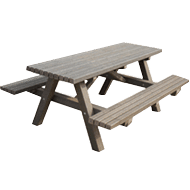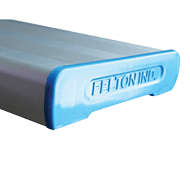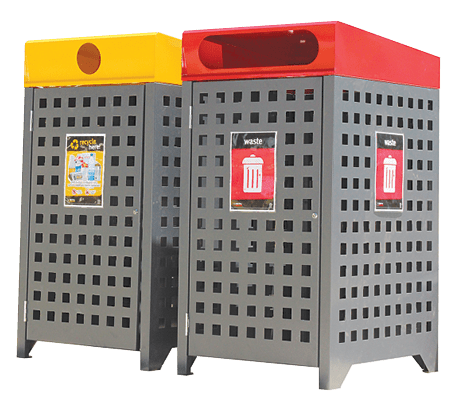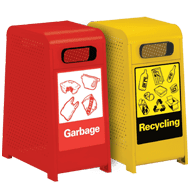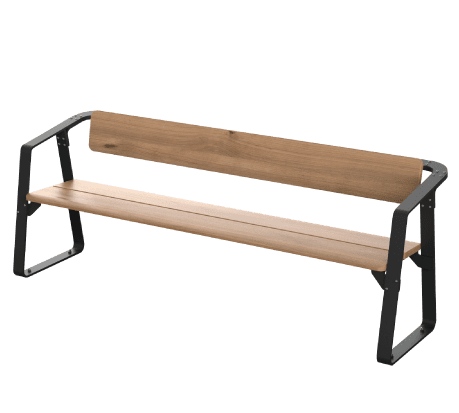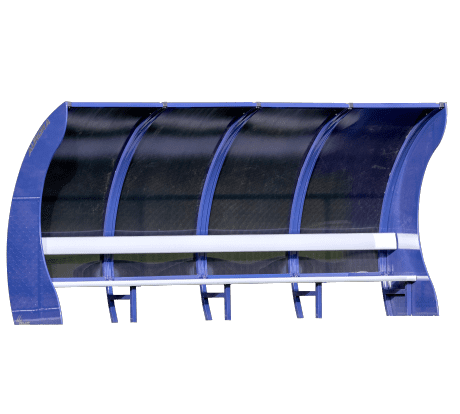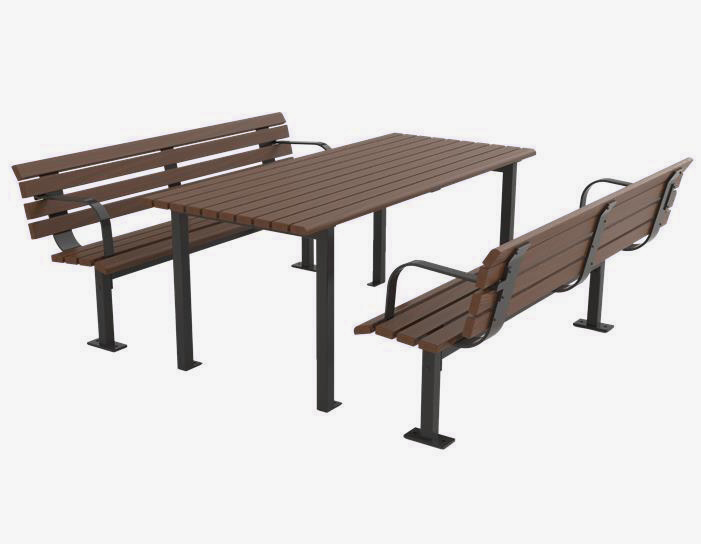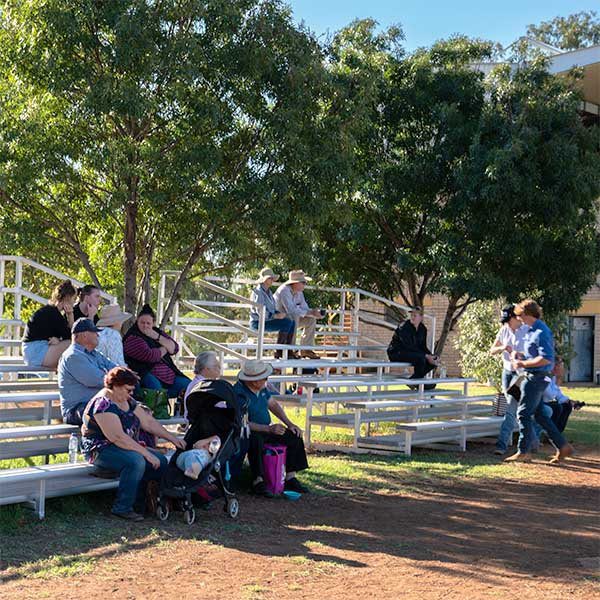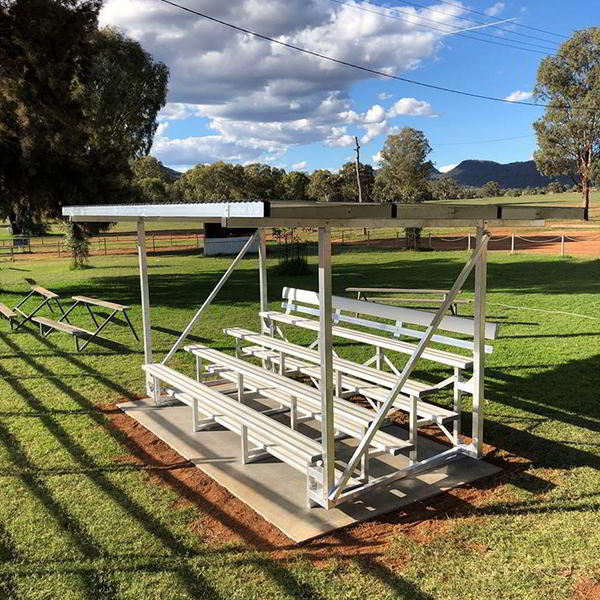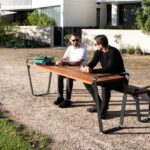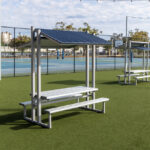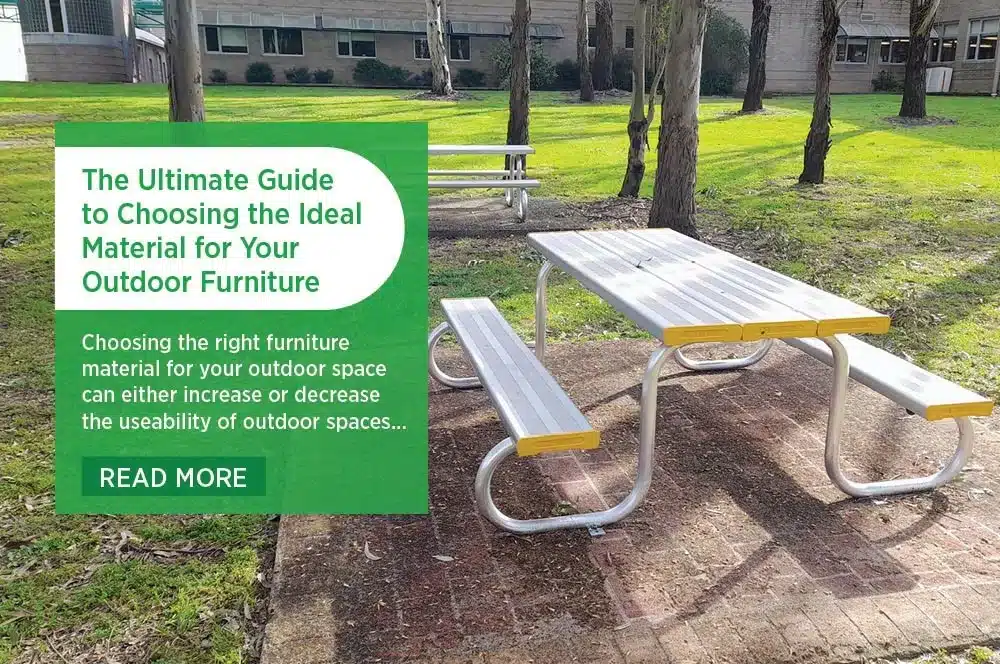
The Ultimate Guide to Choosing the Ideal Material for Your Outdoor Furniture
Choosing the right furniture material for your outdoor space can either increase or decrease the useability of outdoor public spaces. There are a range of factors to consider when choosing the right material for you, these include climatic conditions, durability, eco-friendliness, temperature and cost.
Climatic Conditions
The climate outdoor furniture is located in is a key factor of consideration when choosing the best material for outdoor furniture. The impact of outdoor furniture can cause varying degrees of wear and tear.
For organisations operating in warmer climates, warmer temperatures and sunlight can cause structural changes and fading. If prolonged exposure occurs, this can lead to cracks within the furniture. This is also a prominent concern in cooler regions as well with the impact of ice and frost. In order to ensure longevity from your outdoor furniture an important factor of consideration is what is the best material for outdoor furniture. In order to maintain the furniture’s façade it is important to consider which outdoor furniture materials are most compatible with warmer or cooler climates.
Rot, Mold, and Mildew
A serious consideration for the maintenance of outdoor furniture is the impact of rot, mildew and mould, as they cause negative impacts on the aesthetic and functionality of outdoor furniture. These fungi are a factor of consideration when choosing the best material for outdoor furniture. Rot is a fungus that predominately affects wooden outdoor furniture after extended exposure to damp environments. Without proper sealage or protection from periods of extended moisture rot occurs. It notably weakens the structure of the outdoor furniture, which can impact features such as legs and armrests, causing breakage and ultimately replacement of the outdoor furniture piece.
Another damaging fungus to consider is the impact of mildew on outdoor furniture. This fungus again occurs predominately in damp or moist conditions. Prevention of mildew involves proper cleaning and storage and is less common on materials such as aluminium. Effects of mildew on outdoor furniture include discolouration, and stains and often are also associated with an unpleasant smell.
Mould is an especially pertinent fungus that exists on outdoor furniture, occurring in excessively damp or humid conditions. Mould is often permanently damaging to outdoor furniture as it is difficult to clean. It discolours and stains outdoor furniture, and similar to mildew has an unpleasant odour. Mould additionally poses additional respiratory health risks.
All the listed fungus reduces the accessibility of public spaces and discourages furniture use. This makes choosing the right material for outdoor furniture a crucial decision, in determining the usability of public spaces.
Corrosion and Rust
When purchasing metal outdoor furniture, it is important to think about the impact of rust and corrosion when focusing on metal-coated surfaces. In environments that are subject to heavy rain or close to water bodies corrosion can cause a series of defects to outdoor furniture including deterioration, weakening, discolouration and staining. Excessive corrosion can additionally after time cause breakage and or failure of outdoor furniture.
For metal furniture, there is additionally a risk of the formation of rust. This occurs when there is exposure to both oxygen and moisture on specific metals. The formation of rust on outdoor furniture causes the weakening and disintegration of the metal mass. Although most prominent on metal furniture rust can also impact other materials like wood. Aluminium however is a material that does not rust making it an ideal choice for outdoor furniture in spaces exposed to moisture or areas that require less maintenance.
Durability
If looking at what is the most durable material for outdoor furniture is a factor of concern, then metal furniture specifically aluminium is a suitable choice. As aluminium furniture is resistant to rust, the effects of water increased moisture and damage caused by insects, it is an ideal outdoor furniture material for durability purposes. Metal furniture also offers durability as it can withstand harsh weather conditions, adaptable to a range of tougher climates.
The durability of other materials such as wood depends on the type of wood, construction, and maintenance of outdoor furniture. For increased durability, hardwoods are preferable as there are resistant to insect damage and climate-related decay. It can require regular cleaning and sealants to maintain its longevity.
Temperature and Sun
For warmer climates issues such as rust, corrosion and exposure to sunlight are all factors of consideration to ensure outdoor furniture is useable in public spaces. For warm, wet climates aluminium is resistant to rust and corrosion making it a popular choice for outdoor spaces in these climates. Also for areas with high levels of dust or increasingly humid regions, low-maintenance cleaning is required. For hardwoods, increased wooden fibre density allows it to resist water and insect damage. These durability factors allow it to maintain its condition without warping or cracking.
Sunlight is another factor of consideration when choosing the most effective outdoor furniture material to prevent structural and aesthetic damage to outdoor furniture. Aluminium is a material highly resistant to the fading effects of sunlight with powder-coating finishes preventing fading or chalking. For certain wooden materials sealants and oils will be needed to increase longevity and prevent fading from prolonged sunlight exposure.
Cost
When choosing the best material for your public space outdoor furniture both short-term and long-term costs are factors of consideration. Whilst initial cheaper costs may be appealing in the short term, maintenance, repair and replacement may increase the overall cost in the medium-long term cost for your organisation. By focusing on quality and slightly increasing the upfront costs, outdoor furniture is bought that complements your public spaces.
Eco-friendliness
With an increased focus on sustainability and creating environmentally friendly public spaces, outdoor furniture that is eco-friendly is also an important priority. Focusing on outdoor furniture materials that positively impact the environment such as recycled plastics, wood and aluminium helps to create sustainable spaces.
Care and Cleaning Difficulty
Maintenance of your outdoor furniture is also an important factor of consideration when deciding which outdoor furniture material should be selected. Wooden outdoor furniture requires maintenance in the form of covers for exposure to sunlight and oils to maintain the facade of outdoor furniture and avoid cracks. For areas that require lower maintenance, aluminium outdoor furniture requires minimal cleaning with requiring soap and water.
Conclusion
Here at Felton Industries, we have a wide range of outdoor furniture across bench seating, tables and chairs, shelters, grandstands, bin enclosures and more. Our outdoor furniture comes in a wide range of materials from street furniture which encompasses Australian hardwoods, peak furniture that incorporates recycled plastics and bench seating which is made from 20% more aluminium. For customised requirements or questions regarding which material best suits outdoor spaces, our friendly sales team are happy to assist with any requirements. Get in touch today 1800 834 016.
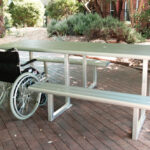
Making Play Inclusive With Wheelchair-Friendly Settings

Wood, Steel or Aluminium? A long-term cost comparison
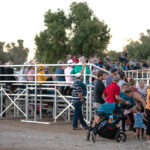
Community impact stories: furniture that brings people together

Outdoor spaces designed for Victorian Schools
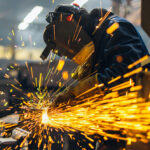
Media Release: Felton Industries secures triple ISO certification to support national growth

Outdoor furniture builds growth and games

Smart furniture trends for open-air learning
